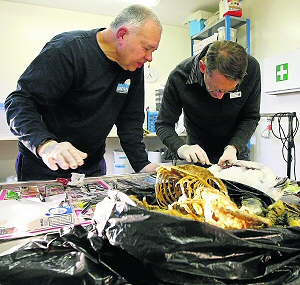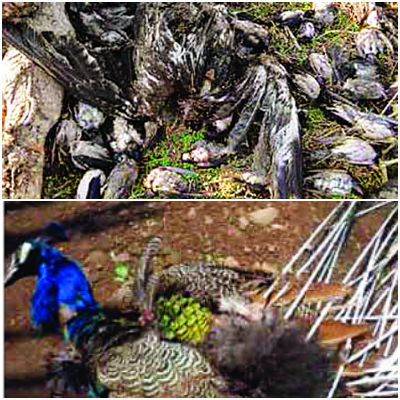
© Stringer/AFPUgandan soldiers patrol through the central African jungle during an operation to fish out notorious Lord's Resistance Army (LRA) leader Joseph Kony.
Rabat - One of Africa's oldest national parks is under attack "from all fronts," said its director on Friday after 68 elephants were slaughtered over the past two months by poachers wielding chain saws and grenades and shooting them from helicopters.
Garamba National Park in the Democratic Republic of Congo is under constant assault by renegade Congolese soldiers, gunmen from South Sudan and others. And this is just a slice of the carnage: international wildlife regulators say 20 000 elephants were killed just in Africa in 2013.
The Johannesburg-based African Parks group, which manages the park, said that since mid-May, the 5000km² Garamba National Park in Congo, which was established in 1938, has faced an onslaught from several bands of poachers who have already killed 4% of its elephant population.
"The situation is extremely serious," Garamba park manger Jean-Marc Froment said in the statement. "The park is under attack on all fronts." A 2012 census found just 2 000 elephants in Garamba Park, down from 20 000 in the 1960s.
One group is shooting the elephants with rifles from a helicopter and then taking off their tusks with a chain saw. They are removing the elephants' brains and genitals as well.
Conservationists say a thriving ivory market in Asia is helping fuel the worst poaching epidemic of African elephants in decades.
In some cases the attacks in Garamba seem to be indiscriminate, killing baby elephants that do not yet possess the valuable ivory tusks.
African Parks, which runs seven parks in six countries in cooperation with local authorities, said the poachers include renegade elements of the Congolese army, gunmen from South Sudan, and members of the Lord's Resistance Army, a militant rebel group whose fugitive leader Joseph Kony is an alleged war criminal.
In one skirmish with poachers, park guards had to try to protect themselves from hand grenades thrown by Southern Sudanese poachers, some wearing military uniforms.




Comment: See also: Tens of thousands of fish wash up on the east coast of Tasmania
Mass of spider crab shells wash up on Tasmania's east coast